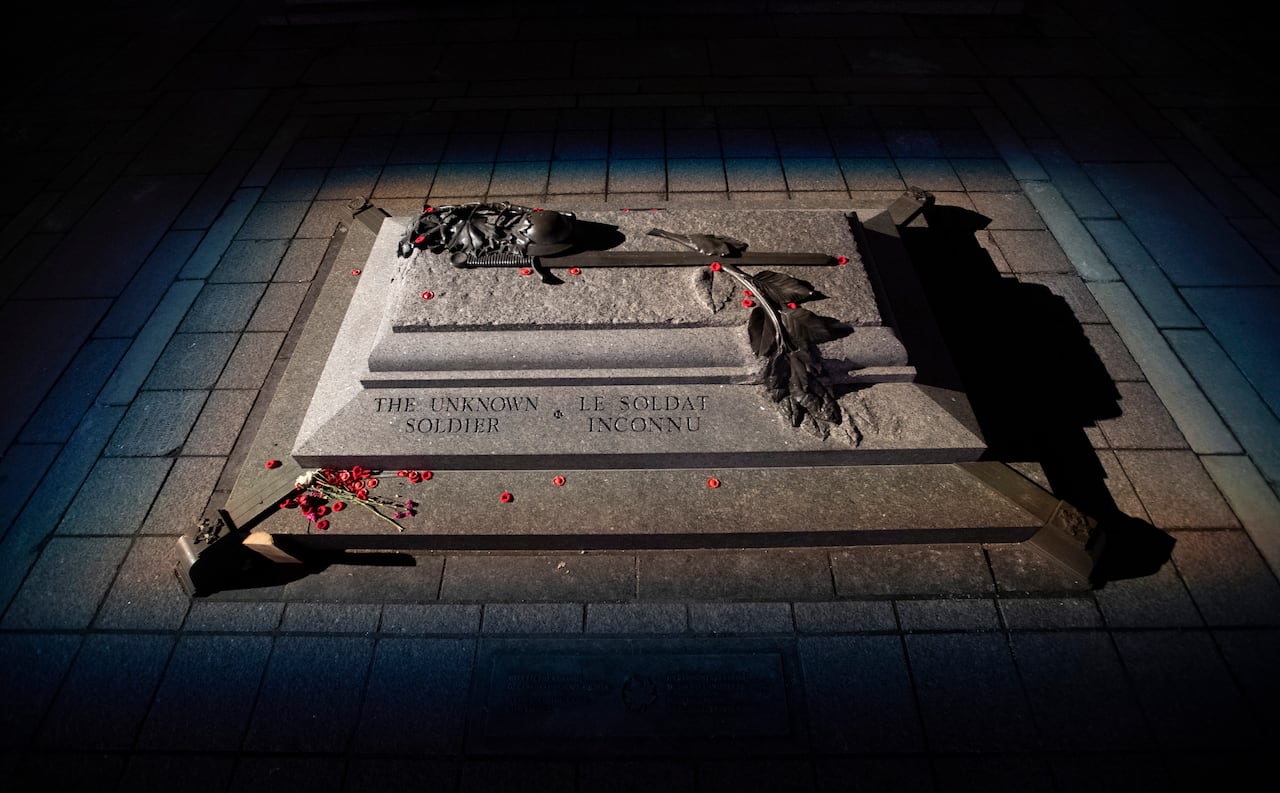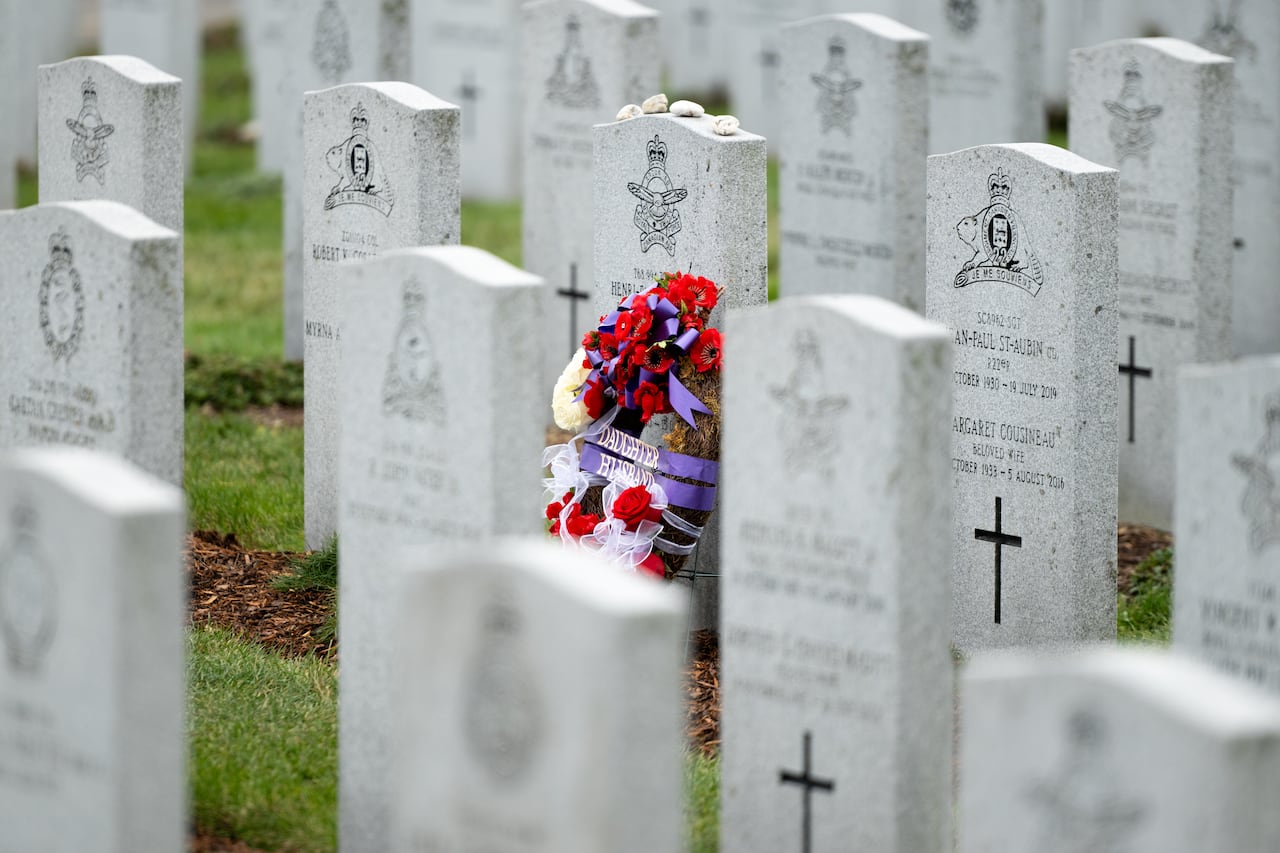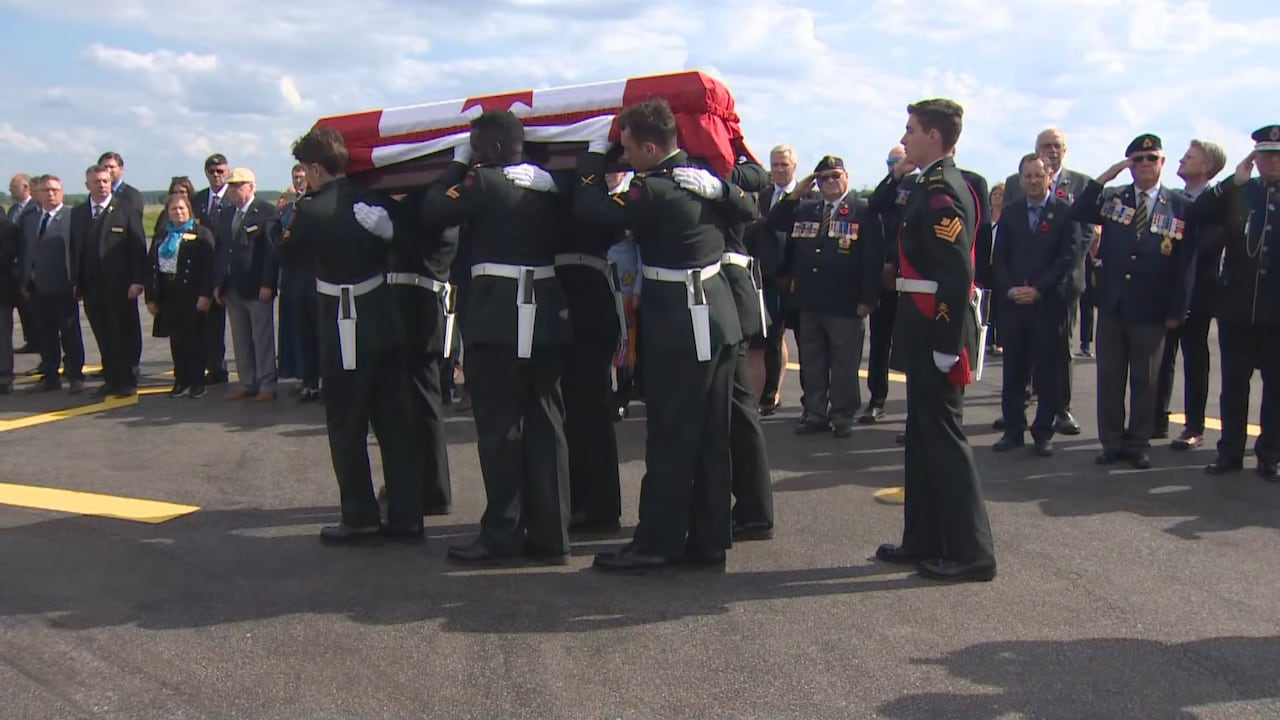It is often said that no one has ever truly died as long as you remember him and say his name.
It's more complex, but nonetheless true for Canada's Unknown Soldier, who was laid to rest under the frozen, watchful gaze of his Great War comrades at the foot of the country's National War Memorial, in the heart of the nation's capital.
A casualty of the First World War whose identity remains a mystery, his life was cut short on a remote French battlefield more than a century ago.
Being not only a powerful symbol but also a victim, the Unknown Soldier anonymously represents all the lives lost in the fog and fire of war.
He is a soldier whose duty to his country never ends.
His face, his name, the very core of his identity – all the aspects that make us human – were stripped from the figurative and sometimes literal crypt of the Western Front in the name of king and country in a war we barely remember today.
There was a time when – to paraphrase the immortal poem In Flanders Fields – he lived, felt the dawn, saw the sunset glow, loved and was loved by his family, who went to their own graves, never knowing his fate.
As much of Canada's Remembrance Day ceremony revolves around the Tomb of the Unknown Soldier, CBC's Murray Brewster uncovers its history, symbolism and the challenge of keeping it intact as technology advances.
As Canada begins to rearm and other countries fight for advantage and supremacy around the world, we are once again forced to consider the unthinkable: the possibility that we are on the verge of another major war.
Russia's ongoing invasion of Ukraine has demonstrated that – in the absence of a nuclear apocalypse – protracted war and large-scale bloodshed on an industrial scale are still possible in the 21st century.
A quarter of a century since the “Unknown Soldier of Canada” was buried in OttawaDNA technology has spread and woven scientific certainty into the fabric of our lives in ways that previous generations could never have imagined.
The question arises: if there is a war in the future, will there ever be another unknown soldier?

Missions and technologies have changed
More specifically, will Canadians even accept the modern unknown soldier? And will families be happy today, not knowing about the fate of a loved one?
The answer is probably not.
The war in Afghanistan and decades of peacekeeping missions have been a very different experience for Canadians. The victims returned home to their families, unlike in the world wars.
Bringing back the faces and names of approximately 29,000 Canadian missing and unidentified soldiers from the last century's wars is the mission of the Department of National Defence's Casualty Identification Program, which was created in 2007.
The focus is on newly discovered skeletal remains and previously unknown graves of Canadian soldiers, all of which were created before 1970.
As a result, Renee Davis, a Department of Defense historian, spends a lot of time in cemeteries searching for unknown soldiers.
It helps to summarize research during the identification process.
“Each one of these stones represents a person,” Davis said during a recent walk through the Canadian National Military Complex.y Beachwood Cemetery in Ottawa. She papplied to different coats of arms and slightly different shades of color on gravestones.
“The tombstones can actually tell their whole story, and that says a lot when you remember who they were.”

Canada and the United States are the most active Western countries when it comes to trying to identify those killed in conflicts of the last century. Both the UK and France maintain their own programs, but within stricter limits, especially when it comes to the use of DNA tests.
In Germany, this task falls to the non-profit organization Volksbund Deutsche Kriegsgräberfürsorge (German War Graves Commission), which has worked for decades to locate, exhume, identify and rebury German soldiers throughout Europe. The commission estimates that more than two million German soldiers remain missing.
Powerful symbols
The forensic anthropologist, who is part of a Canadian casualty identification team, says that while she understands and respects the symbolism, she often personally struggles with the concept of the unknown soldier.
“It's the exact opposite of my job,” Sarah Lockyer said in a recent interview with CBC News.
“This is the exact opposite of one of the core principles of forensic anthropology – the ability to identify unknown people and return their names and faces to them. It is completely contrary to that. And admittedly, I still struggle with the fact that I have to do the exact opposite of what my field requires.”
Although it is scientifically possible to identify the Unknown Soldier, Canada agreed when the body was returned in May 200.0, do not conduct DNA testing. The Commonwealth War Graves Commission transfers war dead to unknown graves only on the condition that their receiving countries swear that no effort will be made to identify them.
“An unknown soldier was exhumed at Cabaret Rouge near Vimy Ridge and they brought him back to Ottawa,” Davis said.
“They went to great lengths to make sure that it was a relatively random selection of people who would be the final candidates before actively deciding who would be exhumed and brought home. And the reason for that is they really wanted to ensure that he would forever remain an unknown soldier so that he could not be identified.”
It all started 100 years ago with Padre Thomas Nangle of the Royal Newfoundland Regiment. He wanted the unknown Newfoundland soldier to be repatriated to honor all those killed. It didn't happen in his lifetime, but a small but mighty team worked to make his dream come true. In Someone's Son: The Repatriation of Newfoundland's Unknown Soldier, CBC's Heather Gillies, along with video producers Chelsea Jacobs and Ted Dillon, tell a story that was a century in the making – from a deep dive into the archives to traveling to France to speak with the team that exhumed the remains and attending a repatriation ceremony, finally bringing the unknown soldier back to his homeland.
No one wanted to be put in the painful situation that the United States found itself in in the 1990s, when the identity of an unknown Vietnam-era soldier in that country was revealed through family pressure and DNA testing.
“I don’t think anyone who was involved in creating the Tomb of the Unknown Soldier in the United States ever imagined a moment when this kind of technology would exist,” said Stephen Trout, a history professor at the University of Alabama who has written extensively about war and memory.
“I think the existing graves of unknown soldiers in different countries will continue, and I think they will continue to have a powerful symbolic meaning,” he said.
“I'm certainly not an expert on forensics or the medical technology currently in use, but it seems highly doubtful to me that we will have any unknowns in future wars.”

“It could have been any of us”
One of the last graves to be established was in Newfoundland in 2024.
The unknown soldier has been brought home after more than a century of peace on French soil – representative of more than 800 Newfoundlanders missing and presumed dead in the world wars.
Phil Ralph, a retired captain and military chaplain, said yes.He does not believe that the Unknown Soldier will lose any of its symbolic power, although future victims will not share his anonymity.
“The unknown soldier“'Elf' is a common ground for everyone because it could be any of us,” said Ralph, who now works for Wounded Warriors Canada, which provides mental health services to veterans.
However, he can put himself in the place of a soldier's family.
“I would be opposed to anyone trying to find out who this unknown soldier is buried under the national war memorial because it is a very powerful symbol, but on the other hand, you know, I am a father and if it was my child, I would want to know.”









